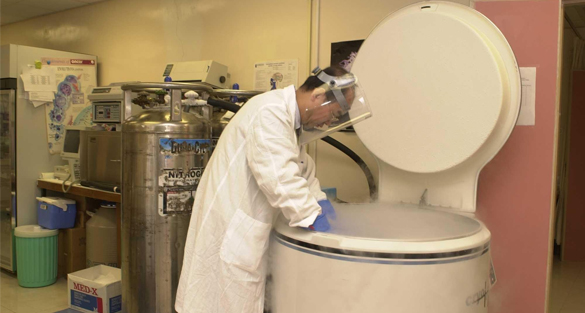As this year is the 23rd anniversary of Cord Blood Transplantation (CBT), the Children’s Cancer Foundation has interviewed a renowned doctor about the recent advance in CBT.
Since the first successful CBT from a compatible sibling to a child with Fanconi anemia in 1989, the technology in CBT has been advancing, said Dr. Chi Kong Li, the Director of Lady Pao Children’s Cancer Centre, the Chief of Service of Department of Pediatrics of the Prince of Wales Hospital as well as Honorary Clinical Professor of the Chinese University of Hong Kong (CUHK).
In the past few decades, bone marrow transplantation (BMT) has been applied in treatment of incurable diseases such as leukaemia and lymphoma. As time goes by, the number of nuclear families increases, making it harder to find a matched family donor. At the same time, unrelated BMT has a higher complication rate and takes 3 months or longer to find a matched undated bone marrow donor. But CBT requires shorter searching time for suitable cord blood. This advantage is especially important for patients suffering from leukaemia.
However, Dr. Li said unrelated CBT was not common before 2006 due to the fact that only a finite number of stem cells exist in each unit of cord blood, and a single unit of cord blood might be too insufficient to secure an engraftment and to restore adequate marrow function for the patient as it depends on the weight of the patient.
In 2006, the Department of Pediatrics at CUHK and the Hong Kong Red Cross Blood Transfusion Service (BTS) jointly launched a three-year study on using double unit unrelated cord blood transplantation for patients who require BMT but without compatible related or unrelated bone marrow donors and insufficient single unit cord blood stem cells. The rationale of combining two units of cord blood was to increase the total number of cells infused which in turn would enhance the chance of engraftment. In the past 3 years, the Prince of Wales Hospital did BMT for 11 patients with acute forms of leukaemia. The success rate in engraftment among these patients reached 90% and there was no increased transplant complication risk and 8 patients have no relapse of cancer. Thus, double unit cord blood solved the difficulty in the insufficient number of stem cells in a single unit of cord blood, and gave one more chance for a cure for severe patients as CBT shortens the waiting time for a suitable bone marrow donor.
Therefore, the public cord blood bank is an important facility as a source of stem cells for transplant in order to increase the survival rate of severely ill patients.
The Hong Kong Red Cross BTS established the first Cord Blood Bank inHong Kongin 1999 to collect and provide patients with cord blood units for transplantation. Since its establishment, it has supplied 69 units of cord blood for transplantation, mostly to child patients. Around 85% of CBT was carried out in The Prince of Wales Hospital. Till now, BTS has stored over 3,000 processed units of cord blood for transplant.
Last year, the Children’s Cancer Foundation donated 2.6 million dollars to the Hong Kong Red Cross BTS for the upgrade of cord blood service facilities to international standards. The sponsorship will help Hong Kong Red Cross BTS to continue supplying high quality cord blood, free of charge, to local patients in order to help save and enhance lives.
Source: Children’s Cancer Foundation










